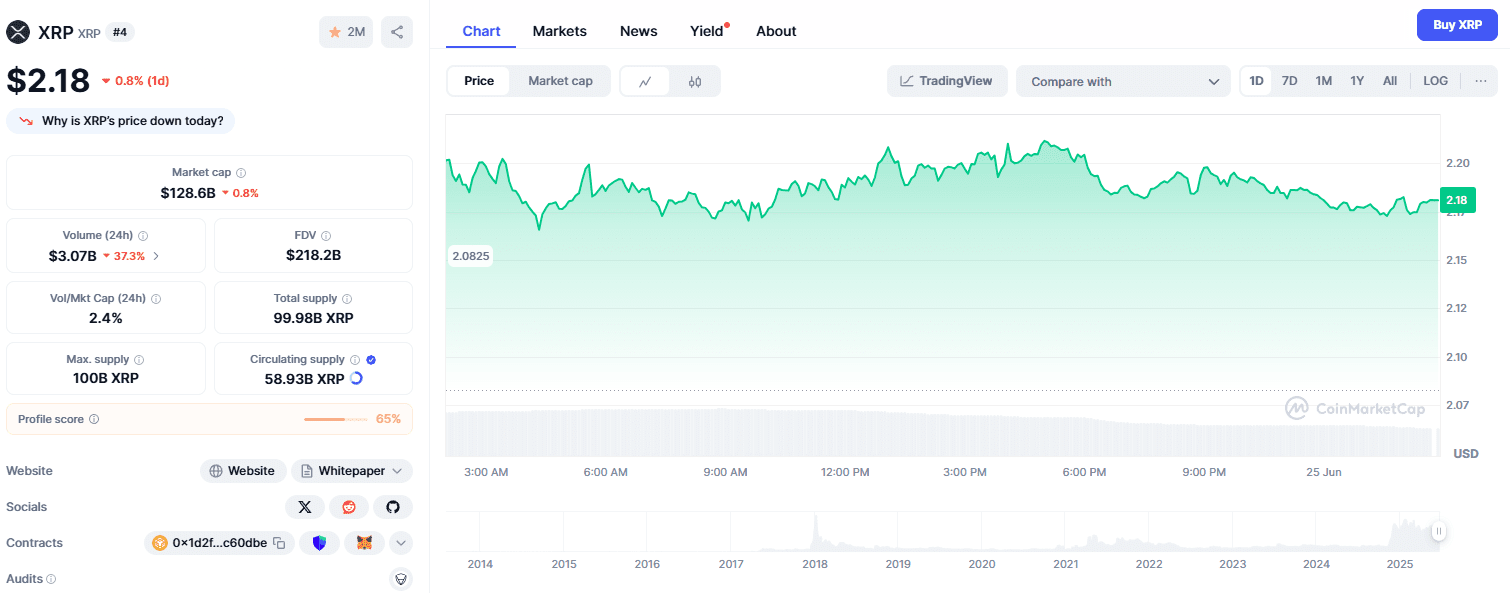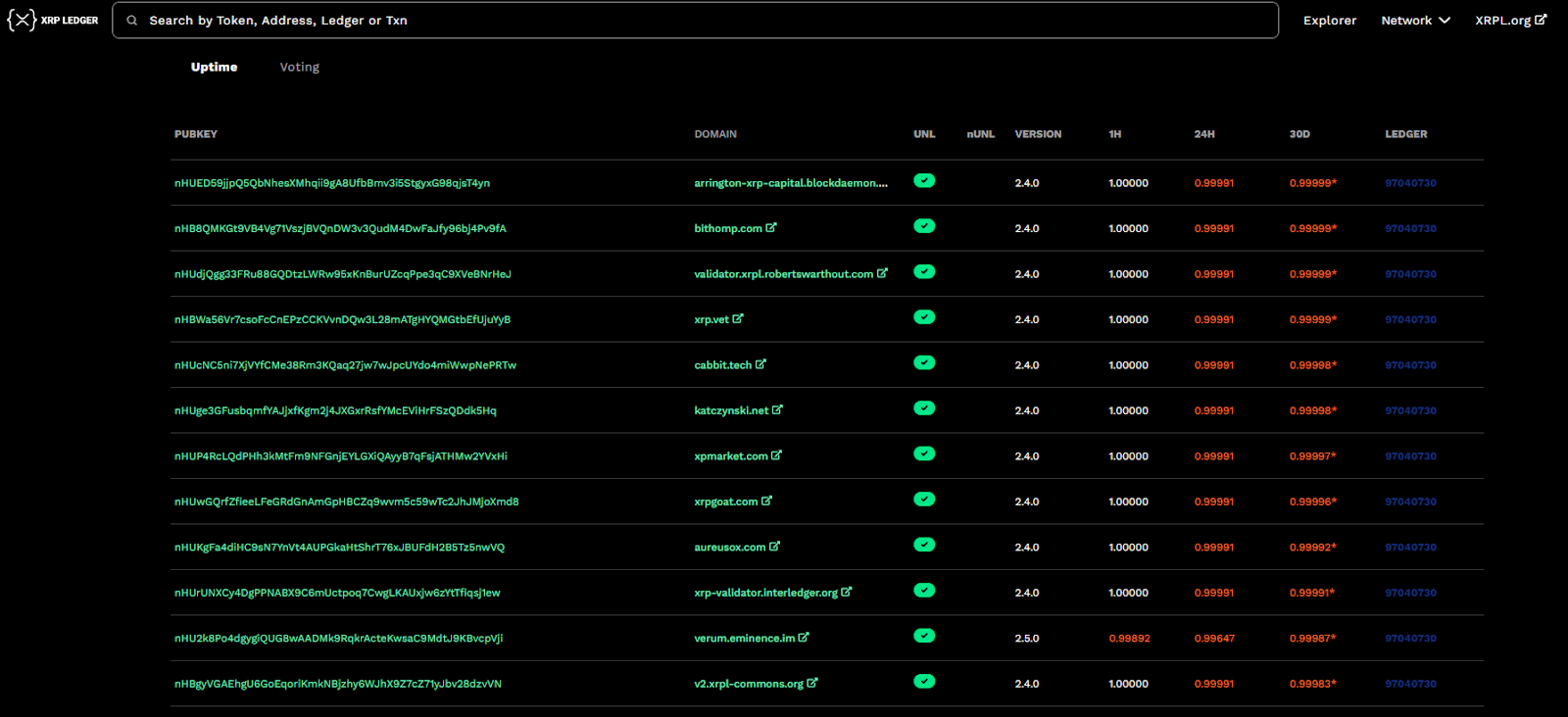How Does Staking XRP Work?
Staking XRP has become the buzzword among cryptocurrency enthusiasts. Staking XRP involves holding your XRP coins in a wallet or a platform and getting a reward, which can be in the form of additional XRP or some other cryptocurrency. The guide below summarizes everything that you need to understand when it comes to staking XRP, beginning with what it's like and how it works and up towards the best platforms which offer the service.
Contents
- What is XRP Staking?
- Historical Background of XRP
- The Fundamental Concepts and Technologies Behind XRP Staking
- How to Stake XRP: Step-by-Step Guide
- Top Platforms for Staking XRP
- Advantages and Disadvantages of XRP Staking
- Real-World Applications for Successfully Staking XRP
- Future of XRP Staking
- Conclusion
- FAQ
What is XRP Staking?
Staking on XRP refers to the process where you retain or hold your XRP coins to be part of validating network transactions or supplying liquidity. Staking differs from mining employed on some cryptocurrencies like Bitcoin since it's energy-efficient, safe, and convenient. Stakers are compensated for the part they play in the running and safety of the network.
Staking on XRP can be somewhat varying on each platform. Some platforms offer staking-like rewards through the use of your tokens for the purpose of liquidity provision on the decentralized exchanges, and others offer rewards for keeping your XRP tokens for defined time periods.
Historical Background of XRP
XRP was created for cross-border, low-cost, and speedy payments by Ripple Labs in the year 2012. Contrary to the normal cryptocurrency, XRP does not rely on mining. It, instead, uses the XRP Ledger, which is a consensus-based ledger for verifying transactions using trusted validators.

Initially, the XRP was for banks and financial institutions as a bridge currency. It then found numerous uses, such as staking, which enables the user to gain passive earnings.
For a detailed breakdown, including market cap, volume, and community reviews, check out Cryptogeek’s Ripple (XRP) page.
The Fundamental Concepts and Technologies Behind XRP Staking
Staking XRP utilises the Ripple technology, the XRP Ledger (XRPL). XRPL utilises a consensus mechanism called the Ripple Protocol Consensus Algorithm (RPCA), which eliminates miners and spares a huge amount on energy.

When you stake XRP, your coins are generally held on smart contracts or liquidity pools. These liquidity pools hold funds in safety while providing liquidity or supporting blockchain functioning and hence, they reimburse the holders for the coins contributed.
Moreover, XRP staking generally involves time-based requirements, and the more time you spend staking, the greater the rewards. It makes long-term investment attractive, maintaining the stability of the XRP market.
When selecting a wallet, you can explore Cryptogeek’s Exarpy vs Ledger comparison to choose the best storage option for XRP staking.
How to Stake XRP: Step-by-Step Guide
- Choose a Reputable Platform: Choose a popular platform or wallet that provides XRP staking, such as Binance, Bitrue, or Nexo.
- Transfer XRP Tokens: Transfer XRP tokens into your respective platform's staking wallet.
- Select Staking Terms: Choose your favourite staking term. Some platforms offer flexible staking with no lock-up and others offer term staking with greater rewards.
- Confirm Staking: Confirm your staking details and start receiving rewards.
Always be sure to check the conditions and terms, fees, and security features of the platform you're choosing to protect your holdings.
Top Platforms for Staking XRP
- Bybit: A user-friendly platform offering XRP staking with flexible terms and a clear APR. Ideal for those seeking liquidity without long-term lockups..
- Bitrue: Known for strong XRP support and Power Piggy module.
- Nexo: Provides interest-earning accounts for XRP.

Bybit offers flexible XRP staking with transparent APR and no lock-up.

Bitrue’s Power Piggy enables easy XRP staking with daily rewards.

Nexo allows users to earn passive income by depositing XRP securely.
Advantages and Disadvantages of XRP Staking
Advantages:
- Passive Income: Earn automatic rewards for holding XRP.
- Energy-Efficient: Staking uses less power compared to mining.
- Stability for the Market: Supports long-term ownership and discourages price fluctuations.
Disadvantages:
- Limited Accessibility: Exchanges do not all facilitate XRP staking.
- Lock-Up Periods: Fixed-term staking prevents you from immediate use of your tokens.
- Platform-Related Risk: The likelihood for platform vulnerabilities or changes affecting rewards.
Real-World Applications for Successfully Staking XRP
One notable example is Bitrue’s Power Piggy program. Launched in 2019, Power Piggy quickly gained popularity among XRP holders. Users have enjoyed consistent returns, demonstrating XRP staking’s potential for reliable passive income.
Another instance includes the staking program on Binance. People are satisfied with the adaptability and clear reward system on Binance, which boosts trust and engagement among the XRP holders.
Future of XRP Staking
Staking for XRP will continue growing as cryptocurrency adoption expands. More platforms will introduce XRP staking support, increasing availability and models for incentives. Improvements for blockchain technology will further expand staking effectiveness, security, and profitability, which in turn will make it even more attractive for end-users.
Conclusion
Staking XRP offers a power-thrifty and safe manner for you to enjoy passive income on your XRP holdings. Understanding the process, selecting a good platform, and regularly switching your staking obligations can be a lucrative venture. As the XRP staking process matures, it offers the potential for even greater opportunities for investors seeking periodic payouts.
FAQ
What is XRP staking?
Staking XRP involves having your XRP coins on a staking platform for the sake of earning rewards. These rewards can be additional XRP or some other digital coins, awarded for contributing to blockchain operation or liquidity pools.
Can I stake XRP directly through my wallet?
Yes, some wallets and exchanges have support for staking XRP directly. Make sure that your wallet supports staking, however, as there aren't such functionalities within all wallets.
What are the risks of XRP staking?
Staking XRP poses some risks such as platform security issues, lock-up periods which constrain token accessibility, and market changes affecting rewards. Conduct research and select established platforms to mitigate risks.
How much can I earn using XRP staking?
Rewards depend on the platform, staking term, and market conditions. Generally speaking, longer-term staking translates into greater rewards, with annual interest rates up to 10% or even more and varying between 2% and 10%.
Is staking XRP energy-intensive?
No, XRP staking is more energy-efficient than mining-based coins like Bitcoin. The consensus algorithm for XRP cuts energy usage dramatically and hence makes it environmentally friendly.
Where can I safely stake XRP?
Reputable staking platforms for XRP include Binance, Bitrue, and Nexo. Always opt for platforms that have good security, high ratings among their users, and clear staking guidelines.